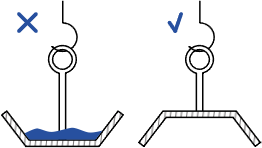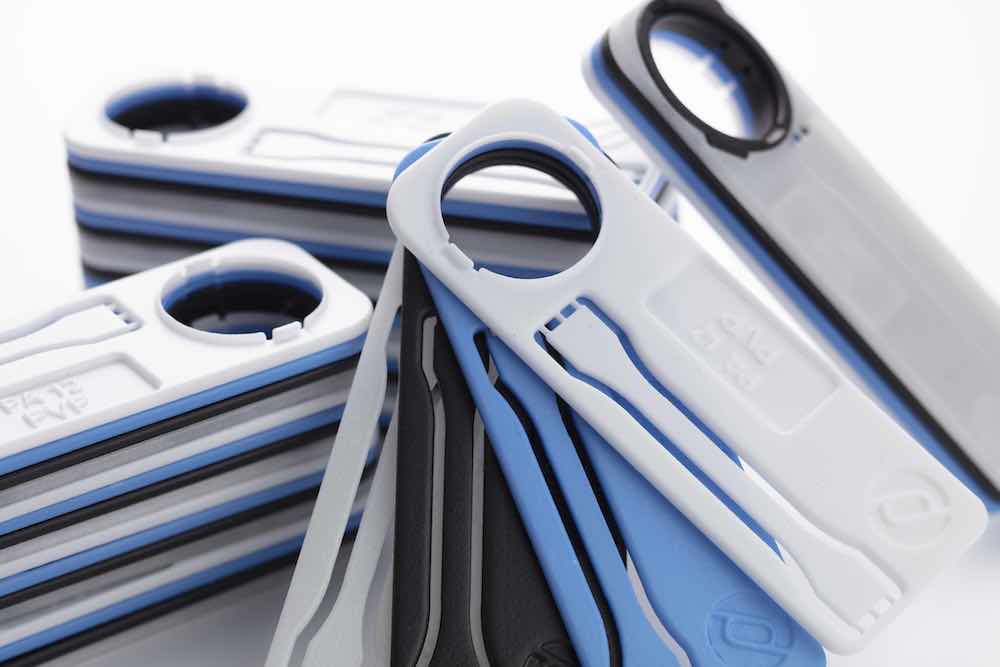Vapor Polishing
In short
Vapor Polishing – VP for short – is a surface treatment developed for the food processing and machine building industries. These applications often need surfaces that are non-porous and easy to clean which can be achieved with VP. There are two levels to choose between: VP and VP+
Finished your design? Make sure to check:
- The part should have an even wall thickness throughout.
- Add fillets to any sharp edges and corners to prevent blistering.
- Internal cavities <8mm, the treatment won’t reach those surfaces.
- Parts need to have an opening or eyelet that can be used for mounting.
- Make sure the part has proper drainage when hanging from the eyelet.
- Large flat surfaces tend to warp during the process.
- Moving parts may fuse together in the process, they should be printed and processed separately.
About Vapor Polishing
VP is a chemical finishing process. In a multi-step process, a solvent vapor in condensed onto the parts. This causes the top layer of the surface to fuse, leveling it to a smooth surface.
To ensure that the vapor can access all surfaces, each part is hung in a carrier. For this purpose, mounting options in the form of an opening or eyelet on the part are needed. Ideally, the position of eyelet ensures an evenly transferring of the weight.
When determining the hanging orientation, the drainage of condensed vapor should also be considered. Solvent material should not be able to accumulate anywhere on the part, as this will cause blistering. Adding rounded edges to inner corners helps prevent the accumulation of the solvent.

The carrier with hanging parts is loaded into the process chamber. A recipe is selected based on the wallthickness of the parts. This recipe determines the exposure and drying time. After the machine chamber is closed, a solvent vapor is released. The vapor condenses onto the parts. After the set exposure time has passed, the parts are vacuum dried to remove residual solvent.
The treatment results in sealed surfaces on the in- and outside of the parts. Thus, greatly improving the cleanability and reducing of bacteria inhibition. The parts also have further improved airtightness and even increased mechanical properties. The surface finish is smooth and has a slight shine to it. Colored parts become more vibrant with this surface treatment.
These benefits make VP the ideal solution for food-contact or moving parts. The smooth surface will reduce friction between moving or sliding surfaces. VP is also a great asset in medical applications or skin contact products.
Vapor Polishing
This level is the most reliable option. It might not have the most smooth finish, but it’s consistent and minimizes the risk of part defects. And fear not, your parts will still be sealed as tightly as a drum. This is a cost-effective option for those who value durability over dazzle.
Vapor Polishing +
This level will produce super smooth finishes. But, like any thrilling adventure, it comes with a dash of risk. There’s a chance for part defects, such as blisters in sharp corners or cavities, and a touch of warpage. And, like any additional service, it carries a higher price tag. We recommend this option when you are looking for the most smooth and shiny finish, but fully acknowledging the associated risks.
What’s inside our guidlines?
Our guidelines are filled to the brim with useful information on how to design your models, the newest technologies and specifications for your parts!

